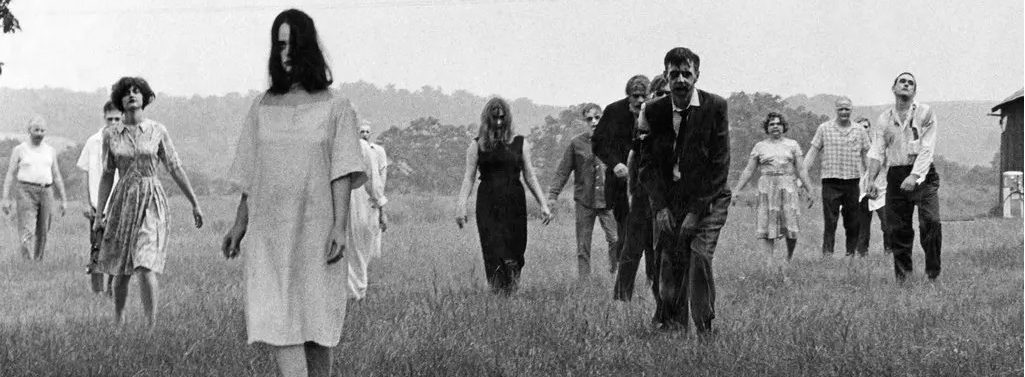Noel Carrol begins his “Why Horror?” essay by noting that questions arise about watching horror that don’t come up with other sorts of movies. “Why” he asks, “would anyone want to be horrified, or even art-horrified?” People don’t routinely seek out experiences they find disturbing or disgusting, but disturbance and disgust are often central to the experience of horror. So, after a semester of watching horror movies, thinking about their internal properties, and discussing audience responses, why do you think horror remains such a widely (though not universally) popular genre? Feel free to cite the arguments of Carrol or Tudor, or to offer an idea that is entirely your own.
Author Archives: Michael Newbury
Get Out
Especially now that we’re near the end of the semester, it’s worth thinking about the way that earlier movies and larger movements in the horror tradition have influence on more recent work. Last week, we discussed the Babadook as a kind of revsion of The Exorcist. While early films are influential at points throughout Get Out, none is more crucial overall than Night of the Living Dead. Discuss briefly one scene or moment where you see a particular connection shared between the two movies.
Babadook 2
As we discussed toward the end of last class, The Babadook pushes you to think about the relationship of the film to children’s stories and fairy tales. The mysterious pop-up book that appears in the house is the strongest push, but there are others. What is one point where you see the movie invoking the narrative dynamics or visual imagery or children’s stories or folk tales? Why does the instance you mention matter? It might help to read the very brief fairy tales linked to the syllabus for out last class.
The Babadook
The Babadook puts a children’s book at its center, all but asking viewers to compare the movie to folk tales, fairy tales, and darker kinds of children’s stories. What is one particular way that you think the movie borrows from archtypal stories about parents, children, magic and monsters? I attached a few nineteenth-century versions of familiar fairy tales to the syllabus. Reading those might give you a place to start.
The Ring and Jhorror
Below is a link to the opening of Hideo Nakata’s Ringu (1998), the film that more than any other led to the international spread of Japanese horror at the turn of the 21st century. While you likely haven’t seen the movie as a whole, how would you say this clip introduces the viewer to the horror that follows? How does this opening compare to the opening scenes of late-twentieth-century slasher movies such as Halloween that we’ve discussed in class.
https://drive.google.com/file/d/1QX0IBoYEYckXkqDZSoGBYE-ygRV3O1pg/view?usp=drive_link
Audition 1
Audition is notorious for its change of register, its movement from quiet romance setup to extremely intimate scenes of torture. At some early screenings, audiences don’t seem to have known that they were headed for horror at all. Was there a moment when you felt the film shift? When was it? Why did you choose that scene? If you never felt a shift, why not?
Exorcist 2–Body Horror and Grossout
More than any movie we’ve seen so far this semester, The Exorcist relies on the explicit permeability of the body. A demon possesses Regan; she loses bladder control; puss oozes out of facial wounds; writing erupts on her torso; blood pours from her mouth while she spider-walks down the stairs; she attacks herself sexually with a crucifix. Even statuary is turned bloody and pornographic in the film. In what way do you think viewers react differently to this kind of intense body horror than they do to other kinds of horror-inducing techniques that we’ve discussed?
The Exorcist
After the demon is released in Iraq, the setting of The Exorcist moves to Washington. There the narrative progresses in an extended series of cross-cuts, alternating between scenes of Chris McNeil’s and Father Karas’s lives. What are some of the effects of that editing? What does the alternation emphasize about the characters? How does it set up the film’s later action, when the movie star and the Priest finally meet and agree to try an exorcism?
Texas Chainsaw and the Slasher Film
Many people see Texas Chainsaw as heralding the arrival of of the slasher film, a subgenre that came to dominate horror film in the late 1970s and 1980s. The readings by Carol Clover (for last class) and Robin Wood (for last class and today’s class, too) focus to some extent on the slasher movie. What makes a slasher film? To what extent should we understand Texas Chainsaw as working within the genre as one (or both) of these writers describes it? How do they see the genre changing from the 1970s through the 1980s?
Texas Chainsaw
We talked at some length about the cultural politics of Night of the Living Dead and the late 1960s last week. Texas Chainsaw doesn’t foreground race in the way Night does, but we do begin again in a cemetery and on another road trip. Do you think Texas Chainsaw embraces the anti-establishment politics of Night? You could think about the depiction of family, rural life, the slaughter house, or the obviously counter-cultural tastes of the young people in the van.
